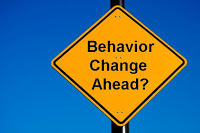Kids on the Autism Spectrum: Reasons for Their Behavior

“I would like to better understand my son, who is on the high functioning end of the autism spectrum. I want to understand how he thinks, how he interprets what is going on, and how his deficits cause problems. Thanks in advance!” This is a very good question, because a lot of parents of kids on the autism spectrum will rush into action before they have collected enough information and analyzed what is going on. If you do not know the reasons behind the behavior, you may very likely do the wrong thing. If you know what is going on, you can help things go better. Realizing that your son will not be a good observer of his behavior is your first step. The youngster with High-Functioning Autism (HFA) or Asperger’s (AS) often does not know what to do in a situation. He does not know the appropriate behavior because he doesn't understand how the world works. Or, if he knows a better solution, he cannot use it because he becomes "stuck." ==> How To Prevent Meltdowns a

